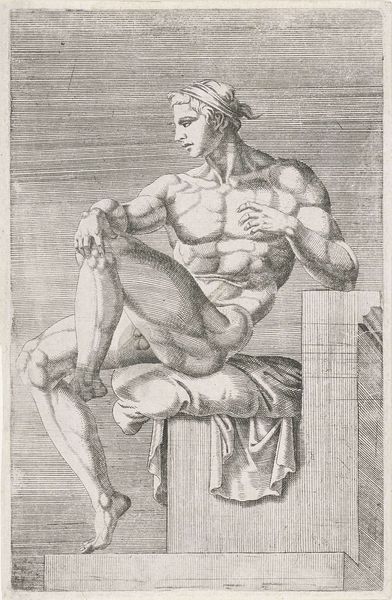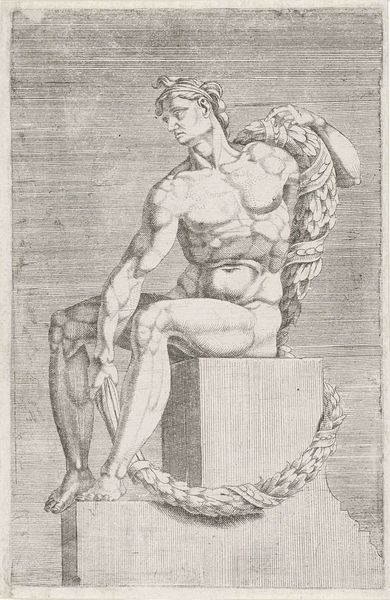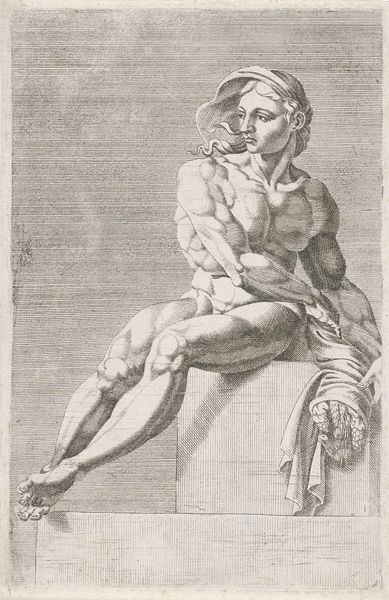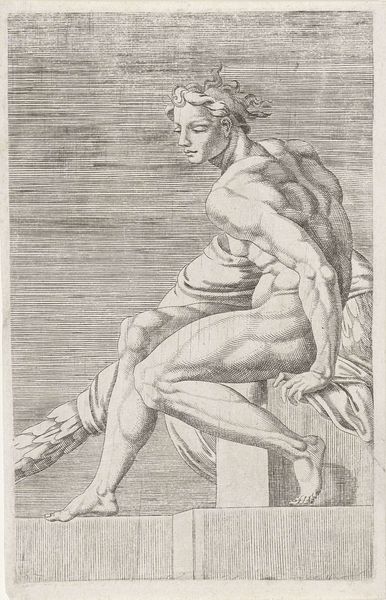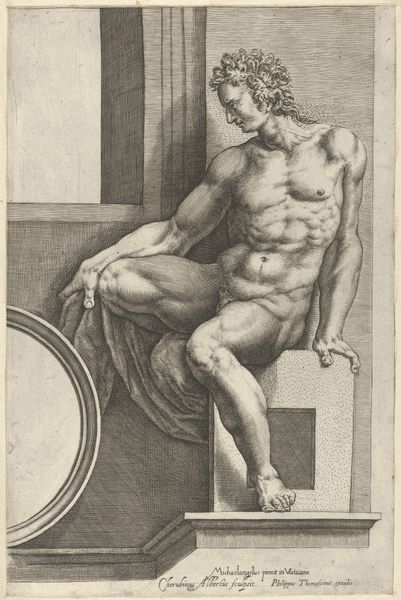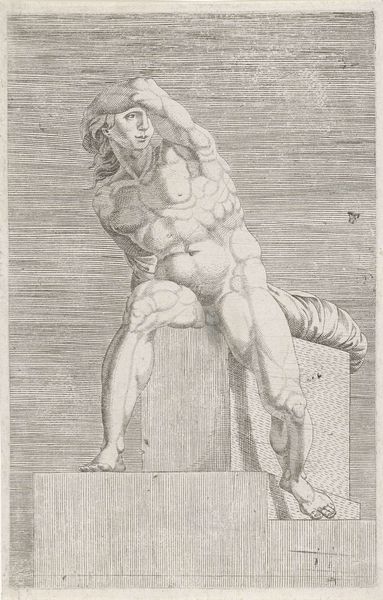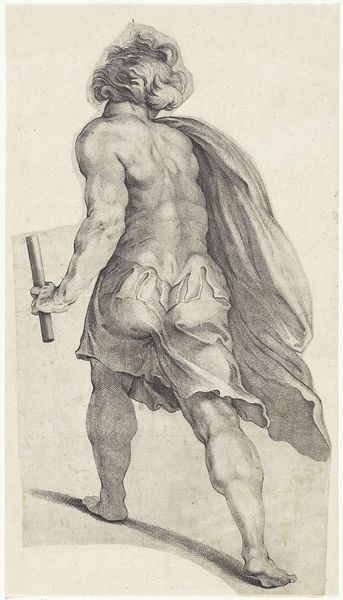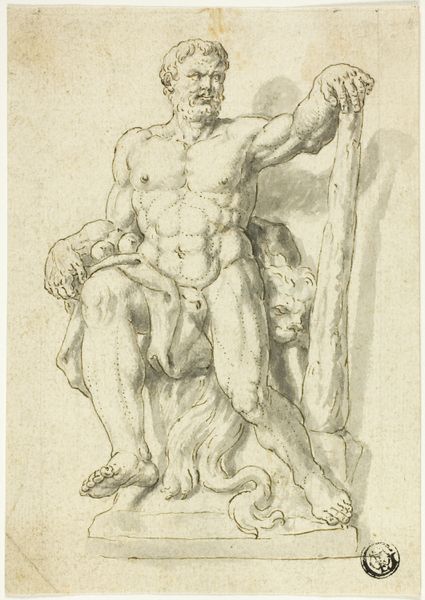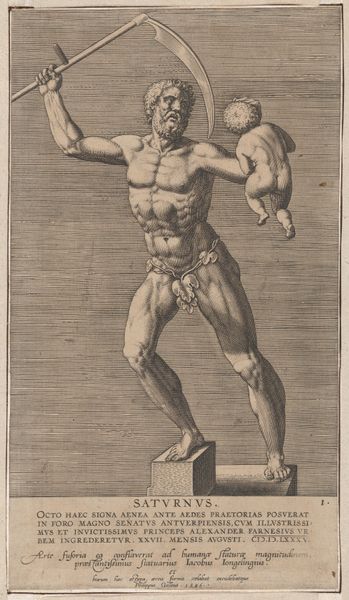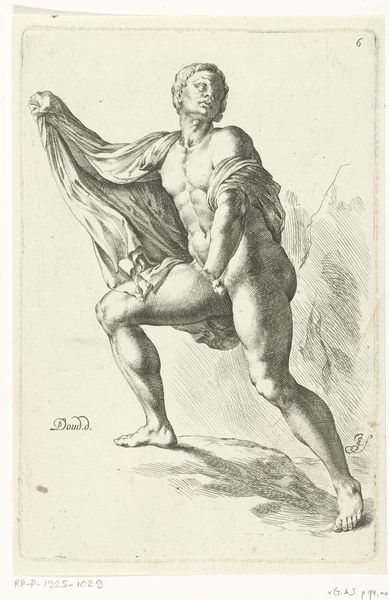
print, etching, engraving
# print
#
etching
#
mannerism
#
figuration
#
11_renaissance
#
history-painting
#
nude
#
engraving
Dimensions: height 216 mm, width 139 mm
Copyright: Rijks Museum: Open Domain
Dirck Volckertsz Coornhert made this engraving, "Zittend naakt uit Sixtijnse kapel," in 1551, likely using a copper plate. Look closely, and you’ll see how the network of fine lines creates the illusion of volume and shadow, defining the figure’s muscular form. Engraving was a highly skilled process, requiring specialized tools and years of training. The engraver would use a burin – a sharp steel tool – to cut lines into the metal plate. The depth and thickness of these lines determined the amount of ink they would hold, and thus the darkness of the printed image. Considered as reproductive art, engravings like this played a crucial role in disseminating images and ideas. This particular print reproduces a figure from Michelangelo’s Sistine Chapel, making that artist's work accessible to a wider audience. This speaks to the growing market for prints during the Renaissance, and the increasing importance of skilled artisans like Coornhert in shaping visual culture. Appreciating the craft involved allows us to view this print not just as a copy, but as a testament to Coornhert’s own artistry and the cultural significance of printmaking.
Comments
No comments
Be the first to comment and join the conversation on the ultimate creative platform.
